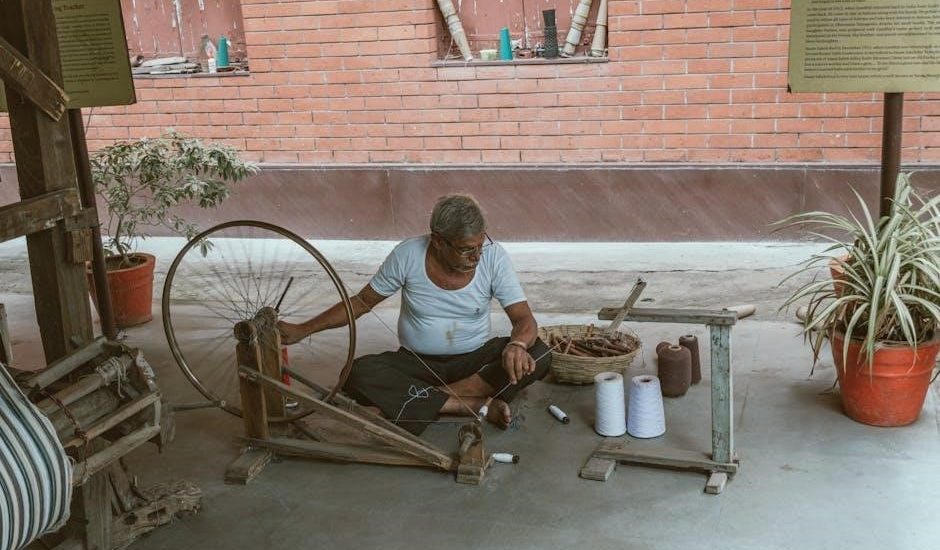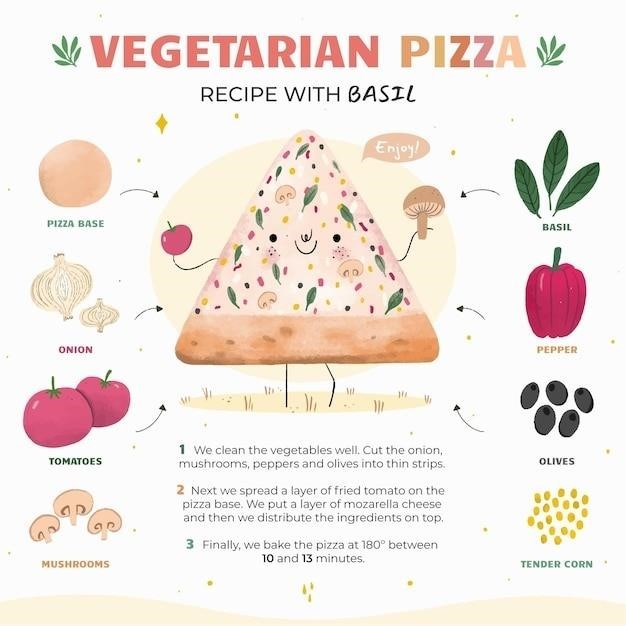Loom pot holder instructions offer a fun and creative way to craft functional kitchen accessories. Perfect for beginners, this guide provides step-by-step methods to weave durable, heat-resistant pot holders using a loom. From choosing colors to finishing touches, it’s an excellent DIY project for all skill levels.
What Are Loom Pot Holders?
Loom pot holders are handmade textiles woven using a loom, designed to protect hands from heat when handling hot cookware. They are typically crafted from cotton loops or yarn, creating a sturdy yet flexible fabric. These pot holders are often customizable, allowing users to choose colors and patterns, making them both functional and decorative. The use of a loom simplifies the weaving process, making it accessible for crafters of all skill levels. Loom pot holders are eco-friendly and durable, providing a practical alternative to store-bought options. They also make great DIY projects, ideal for creative enthusiasts looking to personalize their kitchen essentials. This traditional craft is both fun and rewarding, offering a sense of accomplishment with each completed project.
Why Use a Loom for Making Pot Holders?
Using a loom for making pot holders simplifies the weaving process, ensuring a consistent and sturdy fabric. Looms provide a structured way to weave loops or yarn, making it easier to achieve even tension and a professional finish. This method is particularly beneficial for beginners, as it guides the placement of each loop or yarn strand, reducing mistakes. Additionally, looms save time compared to handheld weaving methods, allowing for faster project completion. The result is a durable, heat-resistant pot holder that is both functional and visually appealing. This approach also enables creativity, as users can experiment with various patterns and designs. Overall, a loom offers precision, efficiency, and versatility, making it an ideal tool for crafting high-quality pot holders.
Benefits of DIY Loom Pot Holders
Creating DIY loom pot holders offers numerous benefits, including customization, cost-effectiveness, and eco-friendliness. With a loom, you can choose vibrant colors, patterns, and materials to match your kitchen decor. This project is family-friendly, making it a great activity for kids and adults alike. The process is therapeutic and rewarding, allowing you to create functional items for personal use or as gifts. Loom-woven pot holders are durable and heat-resistant, ensuring long-term use. Additionally, this DIY approach reduces reliance on store-bought items, promoting sustainability. The satisfaction of crafting something handmade adds sentimental value, making each pot holder uniquely meaningful. This hobby is also budget-friendly, as materials like cotton loops are affordable and widely available. Overall, DIY loom pot holders combine creativity, practicality, and personal satisfaction.
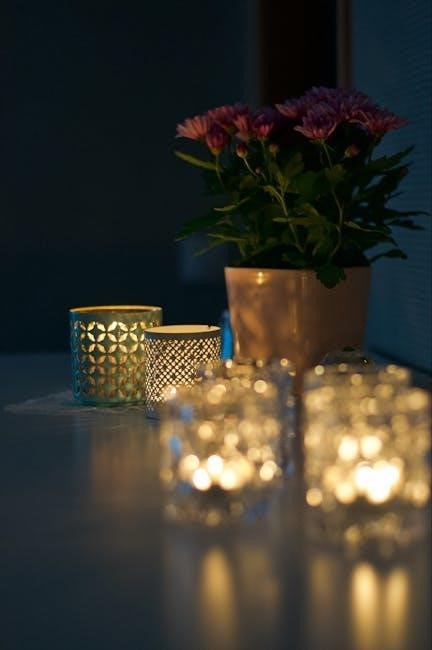
Materials and Tools Needed

Essential supplies include a loom, cotton loops, yarn, metal/plastic hooks, measuring tape, scissors, and a tapestry needle for weaving. Optional: wire or Tunisian crochet hooks.
Essential Supplies for Loom Pot Holders
The core materials needed are a loom, cotton loops, and yarn. A metal or plastic hook is necessary for weaving, while a tapestry needle helps secure loose ends. Scissors and measuring tape are also handy for cutting and measuring loops. Optional tools include wire or a Tunisian crochet hook for finishing touches. The loom size and type can vary, but traditional or jumbo options are common. Cotton loops come in various colors, allowing for customization. Ensure all materials are heat-resistant for safety. Having these supplies ready will streamline the process, making your DIY project enjoyable and efficient.
Types of Looms for Pot Holders
Various looms are available for crafting pot holders, each offering unique features. The traditional 7×7 potholder loom is a popular choice, ideal for standard sizes. Jumbo looms allow for larger designs, while rectangular looms are great for handle weaving. DIY looms, made from wood and nails, offer customization. The Zippy Loom is another option, known for its versatility. Metal or plastic looms are durable, and some include dual hooks for looping and finishing. Choose a loom that suits your project size and skill level. Each type ensures easy weaving and consistent results, making pot holder creation accessible to all crafters.
Recommended Yarn and Loops
For creating durable and heat-resistant pot holders, 100% cotton loops are highly recommended. These loops are specifically designed for potholder weaving and are available in various colors. Cotton loops are heat-resistant, making them ideal for kitchen use. For a traditional look, opt for Harrisville Designs cotton loops, which are widely used in potholder looms. Wool or synthetic blends can also be used for different textures. Ensure the loops are tightly woven to provide adequate heat protection. Acrylic yarns are another option for colorful designs. Always choose high-quality materials to ensure your potholders are both functional and long-lasting. Selecting the right yarn and loops is essential for a successful project.

Step-by-Step Guide to Using a Loom
Start by setting up your loom, attaching loops securely. Weave rows by alternating over and under vertical pegs. Ensure tight tension for durability. Finish by tying loops neatly.
Setting Up the Loom
Setting up your loom is the first step in creating a pot holder. Begin by ensuring the loom is on a stable surface. If using a handheld loom, hold it firmly. Stretch and align the loops across the prongs, securing them tightly to avoid loose weaving. For a traditional loom, string loops on the pegs across two opposing sides, creating the warp. Use a tapestry needle to tuck in loose ends. Ensure even tension to prevent uneven weaving. Proper setup is crucial for a durable and well-shaped pot holder. Once the loops are securely attached, you’re ready to start weaving. This step ensures a strong foundation for your project.
Attaching Loops to the Loom
Attaching loops to the loom is a straightforward process. Begin by stretching the loops and aligning them with the prongs on the loom. Secure each loop tightly to ensure proper tension. For a traditional loom, string the loops across two opposing sides to create the warp. Use a tapestry needle to tuck in any loose ends. Make sure the loops are evenly spaced and not twisted. Properly attaching the loops ensures a smooth weaving process and prevents gaps in the finished pot holder. Once all loops are securely in place, you can start weaving. This step is crucial for achieving a sturdy and evenly textured design.
Weaving Techniques for Pot Holders
Weaving techniques for pot holders involve alternating between over and under the vertical rows to create a sturdy fabric. Start by weaving the yarn across the top of the loops, then bring it back under, repeating this pattern. For a standard weave, alternate the yarn’s position each row to ensure thickness and durability. To add texture, experiment with different patterns like herringbone or twill. Keep the yarn taut but not too tight to avoid puckering. Use a fork or weaving tool to gently tighten each row, ensuring even spacing. This method creates a dense weave, essential for heat resistance. Proper weaving ensures the pot holder will be both functional and visually appealing, making it a practical and stylish addition to any kitchen.
Securing the Loops
Securing the loops is a crucial step to ensure your pot holder is durable and long-lasting. Once the weaving is complete, carefully remove the pot holder from the loom. Use a fork or a specialized tool to gently lift and stretch the loops over the pegs. This step ensures the loops are evenly spaced and not too tight, which could cause puckering. Next, tie the ends of the loops together using a knot or a yarn needle to secure them in place. Trim any excess yarn to create a clean finish. Properly securing the loops prevents the pot holder from unraveling and ensures it remains sturdy for regular use. This step is essential for both functionality and appearance.

Customizing Your Pot Holders
Customize your pot holders by experimenting with vibrant colors, unique patterns, and creative designs. Add decorative edges, handles, or personalized touches like names or motifs for a unique finish.
Choosing Colors and Patterns
Selecting the right colors and patterns is essential for creating visually appealing pot holders. Start by choosing a palette that matches your kitchen decor or reflects your personal style. Consider using contrasting colors to create vibrant designs or monochromatic tones for a sleek look. Patterns can range from simple stripes to intricate weaves, depending on your skill level. For beginners, stripes or checkerboard designs are great starting points. Advanced crafters can experiment with multi-layered patterns or incorporate seasonal themes. Remember, the combination of colors and patterns will determine the final aesthetic, making your pot holders both functional and decorative pieces in your home.
Adding Handles or Decorative Edges
Enhance your pot holders by adding functional handles or decorative edges for a personalized touch. Handles can be made from fabric strips, yarn, or ribbon, secured with a few stitches. Decorative edges, such as braided trims or tassels, add visual interest; To attach a handle, sew it securely to the top of the pot holder, ensuring it’s sturdy enough to withstand regular use. For decorative edges, weave contrasting yarn along the borders or use a tapestry needle to sew on embellishments. These finishing touches not only improve the appearance of your pot holders but also make them more practical and unique. Choose materials that complement your design and ensure they are heat-resistant for safety.
Personalizing with Different Designs
Personalizing your loom pot holders with unique designs allows you to add a creative and functional touch. Experiment with colorful patterns, stripes, or geometric shapes by varying the yarn colors and loop arrangements. Incorporate seasonal themes, such as holiday-inspired hues or floral motifs, to match your kitchen decor. You can also add textured elements like beads or embroidery floss for extra visual interest. For a more personalized feel, try weaving names, initials, or fun phrases into the design. These custom touches make your pot holders stand out and add a handmade charm to your kitchen. With a little creativity, you can turn a simple project into a one-of-a-kind piece that reflects your style. This personalization makes your pot holders truly special and gifts for loved ones.
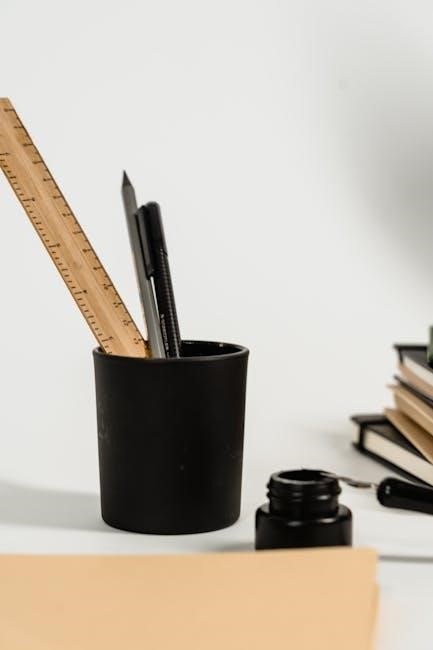
Tips and Tricks
Optimize loop tension by gently stretching loops to avoid slack. Secure loops firmly to prevent unraveling. Use a tapestry needle to weave in loose ends for a polished finish.
Common Mistakes to Avoid
When making loom pot holders, common mistakes include uneven loop tension, which can lead to loose or misshapen designs; Overstretching loops may cause them to break or lose their shape. Another error is not securing loops properly, resulting in unraveling. Using the wrong type of yarn or loops can compromise durability and heat resistance. Additionally, failing to leave enough yarn for finishing can make securing the edges difficult. To avoid these issues, ensure consistent tension, use high-quality materials, and double-check loop placement before weaving. Regularly inspecting your work as you go can help catch and correct mistakes early, ensuring a professional finish.
Optimizing Loop Tension
Optimizing loop tension is crucial for creating sturdy and evenly woven pot holders. Too loose, and the fabric may sag; too tight, and it could pucker or distort. To achieve the right balance, start by attaching loops evenly across the loom, ensuring consistent spacing. Gently tug on each loop after placement to remove slack without over-tightening. As you weave, periodically check the tension by tugging lightly on the edges. If the loops feel too tight, carefully loosen them; if too loose, adjust by pulling gently. Maintaining uniform tension ensures a flat, even surface and prevents misshapen edges. Proper tension also enhances durability, making the pot holder more resistant to wear and heat. This step is essential for achieving professional-looking results.
Finishing Touches for Durability
Finishing touches are essential to ensure your loom pot holder is both durable and long-lasting. Once the weaving is complete, carefully remove the pot holder from the loom and secure the loops by tying them off with a sturdy yarn or thread. Use a tapestry needle to weave in any loose ends, ensuring no stray loops that could unravel over time. Trim excess yarn close to the knot to maintain a neat appearance. For added durability, consider sewing a simple running stitch around the edges using a matching or contrasting yarn. This not only reinforces the edges but also adds a decorative touch. These finishing steps will ensure your pot holder remains intact and functional for years to come.
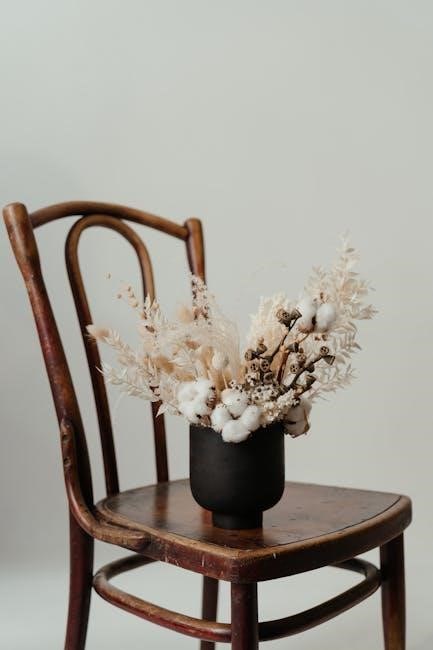
Caring for Your Loom Pot Holders
Caring for your loom pot holders involves washing them gently in cold water, avoiding bleach or harsh chemicals. Air-dry to prevent shrinking and store flat to maintain shape. Proper maintenance ensures longevity and effectiveness.
Washing and Maintenance
To keep your loom pot holders in great condition, wash them gently in cold water using mild detergent. Avoid bleach or harsh chemicals, as they may damage the material. Gently scrub any stains and rinse thoroughly. Air-dry the pot holders, as machine drying can cause shrinking or damage. For storage, keep them flat or roll them neatly to maintain their shape. Regular washing ensures they remain clean and effective for protecting surfaces from heat. Proper care extends their lifespan and keeps them looking vibrant. Additionally, consider sewing or tying the edges for extra durability if needed. Always check for loose threads or damage before use to ensure safety and functionality.
Storing Your Finished Pot Holders
Proper storage ensures your loom pot holders remain in excellent condition. Store them in a dry, cool place, away from direct sunlight or moisture. Fold or roll them neatly to maintain their shape and prevent creases. Place them in a drawer or container to keep them organized and protected. Avoid stacking them heavily, as this may cause stretching or damage. For longer storage, consider placing them in a breathable fabric bag or plastic container with a lid. Keep them away from heat sources or sharp objects to prevent accidental damage. Regularly inspect stored pot holders for signs of wear or pests before use. Proper storage extends their lifespan and keeps them ready for use whenever needed.

Advanced Techniques
Explore multi-layered designs and incorporate various materials to enhance your pot holders. Experiment with different yarn types and patterns for unique textures and visual appeal. This elevates functionality and style, making your creations stand out.
Creating Multi-Layered Designs
Creating multi-layered designs adds depth and visual interest to your loom pot holders. Start by weaving a base layer with solid colors or simple patterns. Next, add a second layer by introducing contrasting yarns or intricate designs. Experiment with alternating over-under patterns or incorporating different loop sizes for texture. For a professional finish, use a tapestry needle to sew loose ends. Multi-layered designs not only enhance aesthetics but also improve durability, making your pot holders more functional and stylish. This technique is perfect for experienced crafters looking to elevate their projects. With practice, you can create unique, eye-catching designs that stand out in any kitchen.
Incorporating Different Materials
Incorporating different materials into your loom pot holders can add unique texture and functionality. Beyond traditional cotton loops, try using metallic threads for a modern look or fabric scraps for a rustic feel. Wool yarns can enhance durability, while silk adds a luxurious touch. For heat resistance, mix in heat-resistant materials like silicone-coated fabrics. Experiment with blending yarns of varying weights and colors to create dynamic patterns. Adding embellishments like beads or embroidery floss can also personalize your designs. Remember to balance aesthetics with practicality, ensuring your pot holders remain functional. This technique allows crafters to explore creativity while creating versatile and durable kitchen accessories.
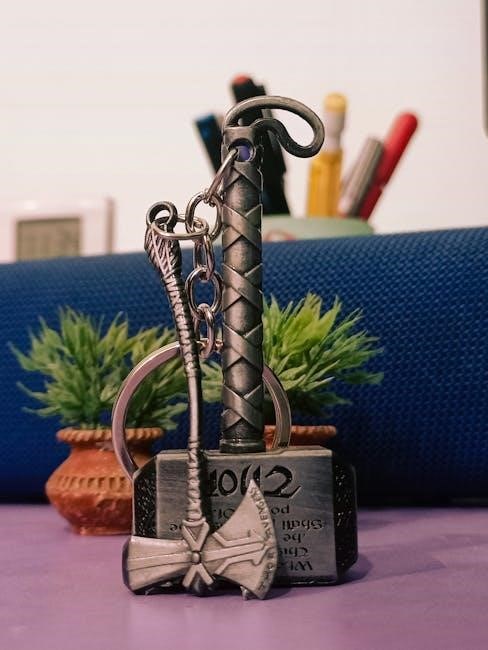
Video Tutorials and Resources
Video tutorials and resources provide step-by-step guides for making loom pot holders. Channels like CraftSanity and VeryPink offer detailed instructions and tips for beginners and advanced crafters alike.
Recommended YouTube Tutorials
YouTube offers a variety of tutorials for making loom pot holders, perfect for both beginners and experienced crafters. Channels like CraftSanity and VeryPink provide detailed step-by-step guides.
These videos demonstrate how to set up your loom, attach loops, and weave intricate patterns. Tutorials often include tips for securing loops and adding decorative finishes.
For example, CraftSanity’s tutorial shows how to remove a finished potholder from a loom, while VeryPink offers techniques for creating squared pot holders with handles.
Additionally, Harrisville Designs shares videos on using their Traditional 7 Potholder Loom, covering essential steps like stringing loops and weaving rows.
These resources are invaluable for mastering the craft and exploring creative designs. They make learning fun and accessible, ensuring your pot holders are both functional and stylish.
Online Patterns and Instructions
Online platforms offer a wealth of patterns and instructions for loom pot holders, catering to all skill levels. Websites like CraftSanity and Harrisville Designs provide downloadable PDF guides and step-by-step tutorials.
These resources often include customizable patterns, allowing you to experiment with colors and designs. Many sites feature detailed photos and diagrams to help you understand each step.
For instance, CraftSanity’s instructions cover topics like warp setup and loop weaving, while Harrisville Designs offers patterns for traditional and jumbo-sized pot holders.
Additionally, platforms like Etsy and Pinterest host a variety of free and paid loom pot holder patterns, perfect for those looking to explore different styles.
With these online resources, you can easily follow along and create professional-looking pot holders from the comfort of your home.
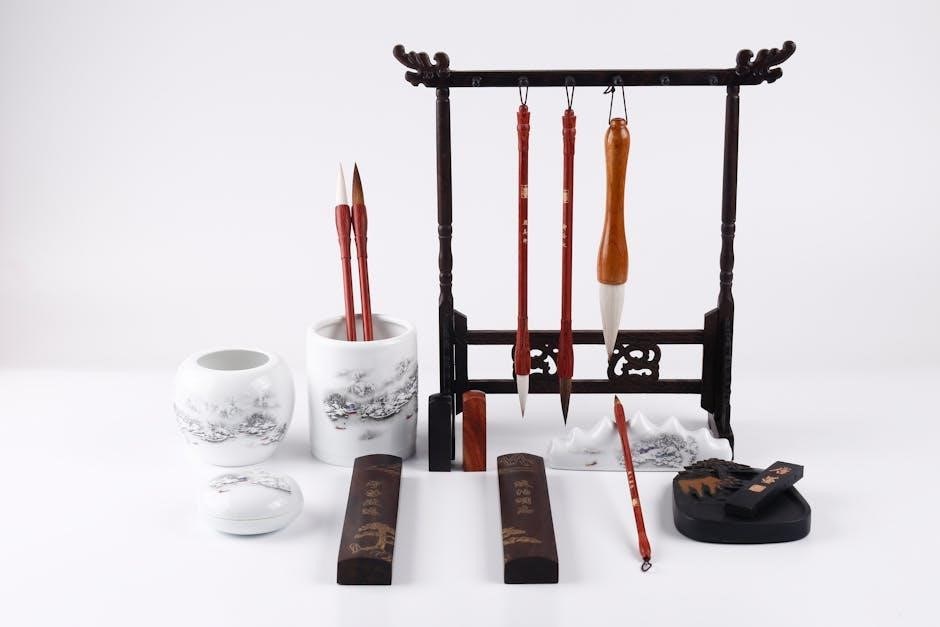
Safety Considerations
Always use heat-resistant materials and follow safety guidelines to ensure durability and protection. Proper techniques prevent burns and extend the lifespan of your loom-woven pot holders.
Heat Resistance and Safety Tips
Ensuring heat resistance is crucial for safe pot holder use. Always use 100% cotton loops or yarn, as synthetic materials may melt or catch fire. Avoid using polyester or nylon, as they can degrade under high temperatures. Properly secure all loops to prevent loose ends that might expose hands to heat; Test your finished pot holder by placing a hot pan on it briefly to check for any weaknesses. For added safety, consider doubling the layers of loops for extra heat protection. Never leave a pot holder near open flames or in direct sunlight for extended periods. Regularly inspect for wear and tear, and replace any pot holders that show signs of damage or fraying.
Using Pot Holders Effectively
Pot holders crafted with a loom are both functional and durable. To use them effectively, always ensure they are dry and free from loose loops. When handling hot cookware, grip the pot holder firmly, making sure your hand is fully covered. Avoid exposing them to open flames or direct heat sources for extended periods. For added grip, consider sewing a small handle or tab. Regularly inspect for signs of wear, such as frayed edges or weakened loops, and replace as needed. Store them in a dry place away from direct sunlight to maintain their shape and color. Proper care ensures your loom pot holders remain reliable and long-lasting for everyday use.
Creating loom pot holders is a rewarding DIY project that combines creativity with practicality. With simple tools and steps, you can craft durable, personalized kitchen essentials that last.
Final Thoughts on Loom Pot Holders
Loom pot holders are a delightful and practical DIY project that offers endless opportunities for creativity. They make excellent gifts and functional additions to any kitchen. With various designs, colors, and patterns, you can personalize each pot holder to suit different styles. The process is also a great way to engage kids in crafting, teaching them valuable skills. Whether you’re a seasoned crafter or a beginner, this project is both rewarding and enjoyable. The satisfaction of creating something useful with your own hands is unmatched. So, gather your supplies and start weaving—your new set of loom pot holders is just a few loops away!
Encouragement to Start Your Project
Starting your loom pot holder project is an exciting venture that combines creativity with practicality. With simple tools and materials, you can create something both functional and personalized. Whether you’re crafting for yourself or as a gift, the satisfaction of seeing your project come to life is incredibly rewarding. Don’t hesitate to experiment with colors and patterns—this is your chance to let your creativity shine. Remember, it’s okay to make mistakes; they’re part of the learning process. Gather your supplies, set up your loom, and dive into the world of weaving. You’ll be amazed at how quickly you can create something useful and beautiful. So, take the first step and enjoy the journey of making your own loom pot holders!

